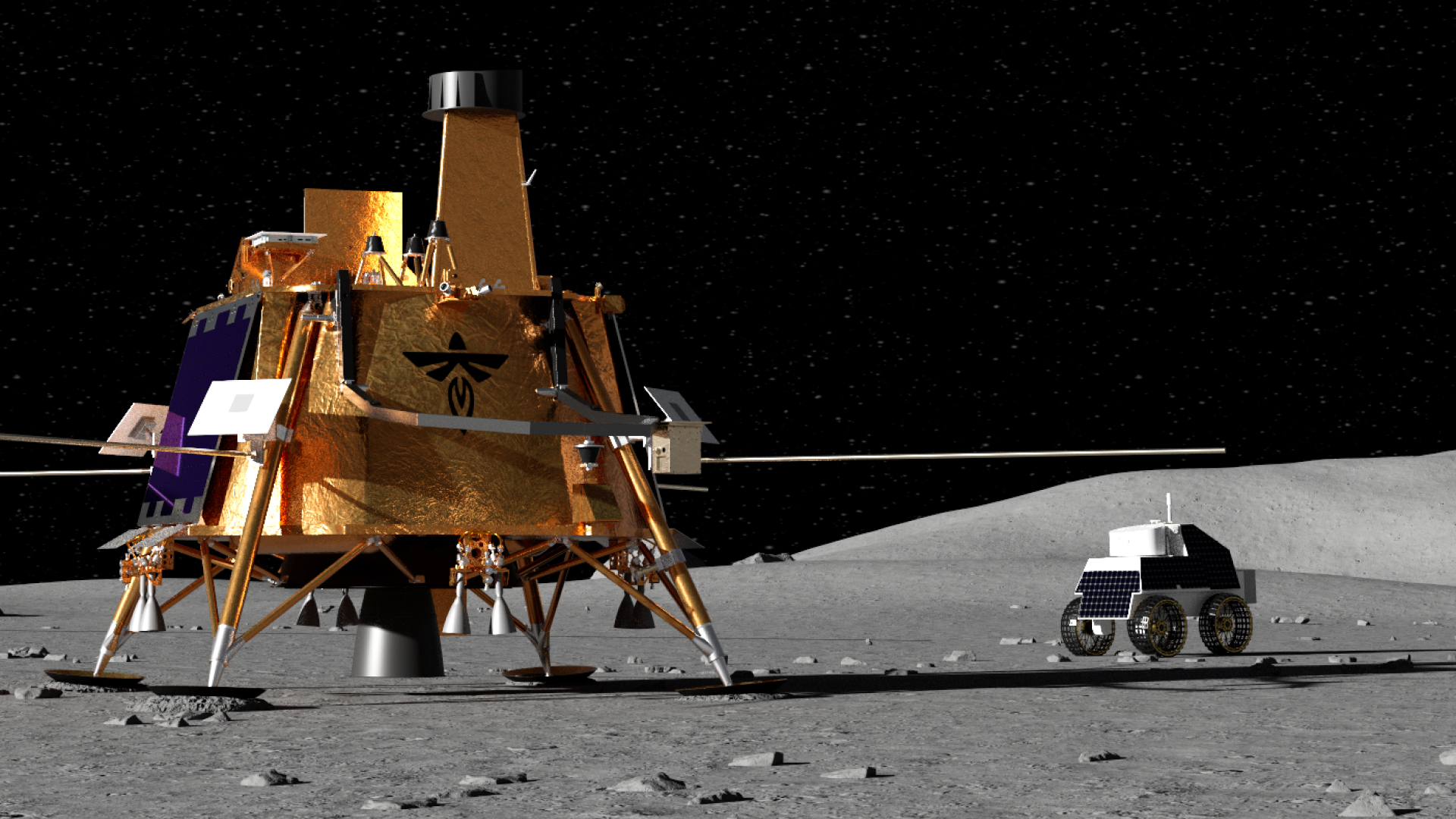2025 represents a historic date for lunar exploration with the landing of Blue Ghost, the first private lander to touch the surface of the Moon. This milestone not only marks an important step forward towards the conquest of space, but also underlines Italy’s fundamental contribution to the success of the project. The mission, the result of a close collaboration between the Italian Space Agency (ASI) and NASA, saw our country as a major player in one of the most ambitious scientific projects of recent decades.
The Blue Ghost mission
The Blue Ghost was designed by private company Firefly Aerospace and is one of many missions funded by NASA through the Commercial Lunar Payload Services (CLPS) program. This programme was created by NASA to support the Artemis programme, which aims to bring humans back to the moon and establish a permanent presence on our natural satellite. CLPS funds private companies to provide a variety of services, including the transport of scientific payload to the Moon.
The landing of the Blue Ghost was a crucial event for lunar exploration. The lander started on 15 January 2025 aboard a Falcon 9 rocket from SpaceX by Elon Musk. After a long journey of 45 days, on 2 March 2025, at 9:34 AM, the Blue Ghost successfully completed its soft landing maneuver in the Mare Crisium, one of the vast lunar plains located on the visible face of the Moon. The lander arrived with extraordinary precision, within 100 metres of the intended point, lifting a large amount of lunar dust due to the thrust generated by the engines used to slow down the descent and ensure a smooth landing. This event was documented in an incredible video that showed the landing process in detail as it had never been seen before on any similar mission.
Collaboration between ASI and NASA
The success of the Blue Ghost mission would not have been possible without the collaboration between the Italian Space Agency (ASI) and NASA. Italy has played a crucial role, both in terms of technology and science. Indeed, of the ten scientific instruments on board the lander, many are the result of cooperation between ASI and NASA. For example, one of the most relevant instruments is the LuGRE (Lunar GNSS Receiver Experiment), developed in Italy by the company Qascom, with the scientific support of the Politecnico di Torino. LuGRE aims to enable the lander to communicate from the Moon’s surface with GPS satellites and those in the constellation Galileo orbiting the Earth.
Other instruments on board the Blue Ghost include the Regolith Adherence Characterization, for the study of lunar regolith, and the Lunar Magnetotelluric Sounder, which will investigate the composition of the lunar mantle using electromagnetic fields. Another noteworthy tool is the Next Generation Lunar Retroflectors, which will enable precise measurement of the distance between Earth and Moon using lasers from Earth, inheriting the technology of retro-reflectors carried during the Apollo missions.
This collaboration between Italy and the United States is not limited to the provision of instruments, but also includes a significant exchange of technological and scientific expertise that will continue to foster the progress of international space exploration.
What happens now?
The Blue Ghost mission will last a full lunar day, or about 14 terrestrial days, during which the lander will experiment and collect data from various scientific instruments. This will provide new information on the lunar environment and its resources, which will be crucial for future exploration missions and the creation of a permanent base on the Moon.
In particular, LuGRE will play a key role in exploring the possibility of establishing a communication network between the Moon and Earth using the Galileo constellation and GPS satellites. The information gathered during the mission will contribute not only to the scientific understanding of the Moon, but also to the preparation of future Artemis missions.
The future of Firefly aerospace
Blue Ghost is just the first step in a series of missions for Firefly Aerospace. Although the present mission is mainly demonstration and experimental, the future of the private lander is already in sight. Firefly Aerospace is planning other missions under the CLPS programme.
The next mission, named M2, is scheduled for 2026 and will carry the European satellite Lunar Pathfinder, the first element of the Moonlight Initiative, a future constellation of lunar satellites designed to improve telecommunications and navigation on the Moon’s surface. The M3 mission, planned for 2028, promises to continue this path with new technologies and scientific objectives.
Conclusion
The landing of the Blue Ghost on the moon is a milestone in space exploration, marking the first successful private lander under the Artemis programme. The collaboration between the Italian Space Agency and NASA, together with the contribution of Italian companies, has made this extraordinary goal possible, further consolidating Italy’s role in international space missions. With the future of lunar missions increasingly oriented towards cooperation between public and private entities, Italy will continue to be a protagonist in the exploration and development of technologies that will take us to the Moon and beyond.






